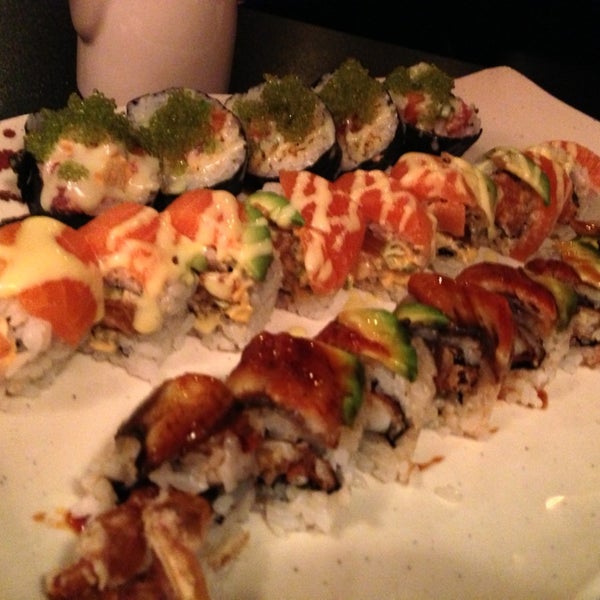

Maguro is leaner meat from the sides of tuna fish. ツナ (tsuna) comes from English and is used for canned drained, flaked tuna, while shiichikin (シーチキン) means “sea chicken” and is actually a brand name of canned tuna used by Hagoromo Foods Corporation. The Japanese use マグロ or maguro when they talk about both fresh and cooked tuna fish. What’s the difference between maguro マグロ, tsuna ツナ, and shiichikin シーチキン? A good example of this is the bluefin tuna, which makes a great fish for sushi. It’s considered good luck by the Japanese to eat foods that are made available during the first few days of the year. Just like its cousin the Atlantic Bluefin tuna, 80% of catches are also consumed as raw fish dishes in Japan, such as sushi and sashimi delicacies. Southern bluefin – the Pacific bluefin tuna is widely available in both the North and South Pacific Ocean and it can grow as much as 3 m (9.8 ft) in length and 450 kg (990 lb) in weight. This tuna is mostly used to make sushi dishes in Japan and about 80% of all Atlantic bluefin tuna caught are consumed as raw fish dishes. Northern bluefin – the Atlantic bluefin tuna, also known as the northern bluefin tuna, is commonly found in the Atlantic Ocean and is sold for thousands to even millions of dollars in the Japanese fish market.Īny that exceed 150 kg (330 lbs) are often called giant bluefin tuna. Otherwise, it’ll just spoil almost immediately once exposed to air. Making bonito sushi can be challenging, as you must ensure it’s 99.99% fresh.


You can also use this tuna to make sushi.īonito – a close relative of the tuna fish, bonito is smaller compared to its cousins and is only available during the spring and summer seasons.įew people can stand the strong smell of this fish, which is why it’s a rare treat, even in sushi restaurants. Sushi chefs were initially also reluctant to use it for sushi or sashimi as its pale and soft flesh was akin to older tuna fish, despite fishermen’s preparations to keep it fresh and on ice.īigeye – excellent for sashimi, the bigeye tuna has a moderately pronounced flavor, a good amount of fat (including omega fatty acids), and tastes better than yellowfin.īigeye tuna meat is large and flaky the texture of the meat is firm as well. In fish markets, it’s labeled and sold to fish brokers as “sushi-grade,” “sashimi-grade,” and “others.”Īlbacore – this type of tuna doesn’t live in the tropical waters surrounding Japan, and until logistics in fisheries were upgraded, it wasn’t found in most sushi recipes until recently. Yellowfin – this type of tuna is commonly found in the tropical and subtropical oceans of the world. It’s also a key ingredient in making dashi soup stock, as well as shuto. Sushi chefs use skipjack tuna to make sushi and sashimi, which can also be served seared (a local dish called katsuo taki). Skipjack – this tuna is widely used in Japanese cuisine and is known locally as “katsuo”. Because you can’t make mistakes when preparing dishes with raw fish meat, all your choices must be impeccable and precise.Ĭontinue reading below and find out which fish and seafood to pick to make delicious and safe sushi dishes.


 0 kommentar(er)
0 kommentar(er)
